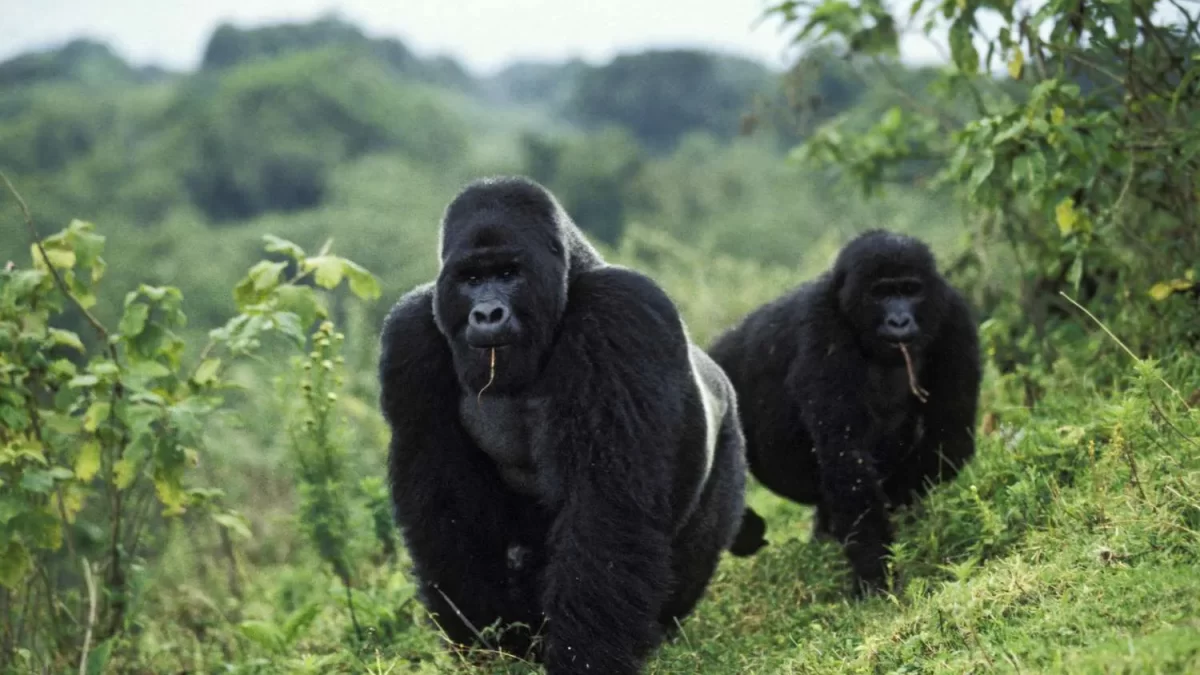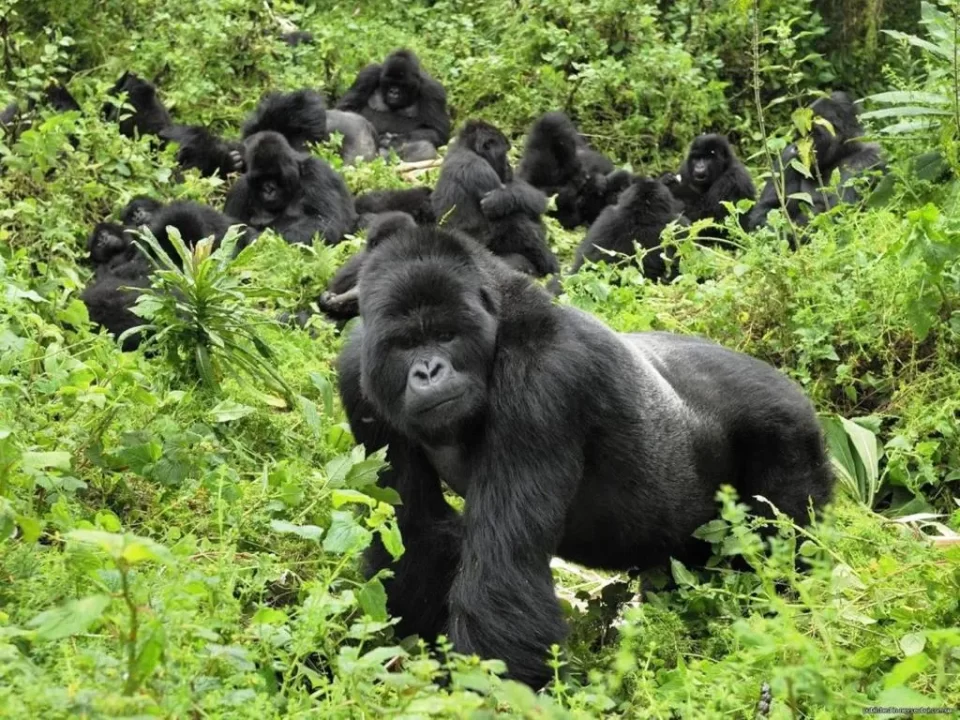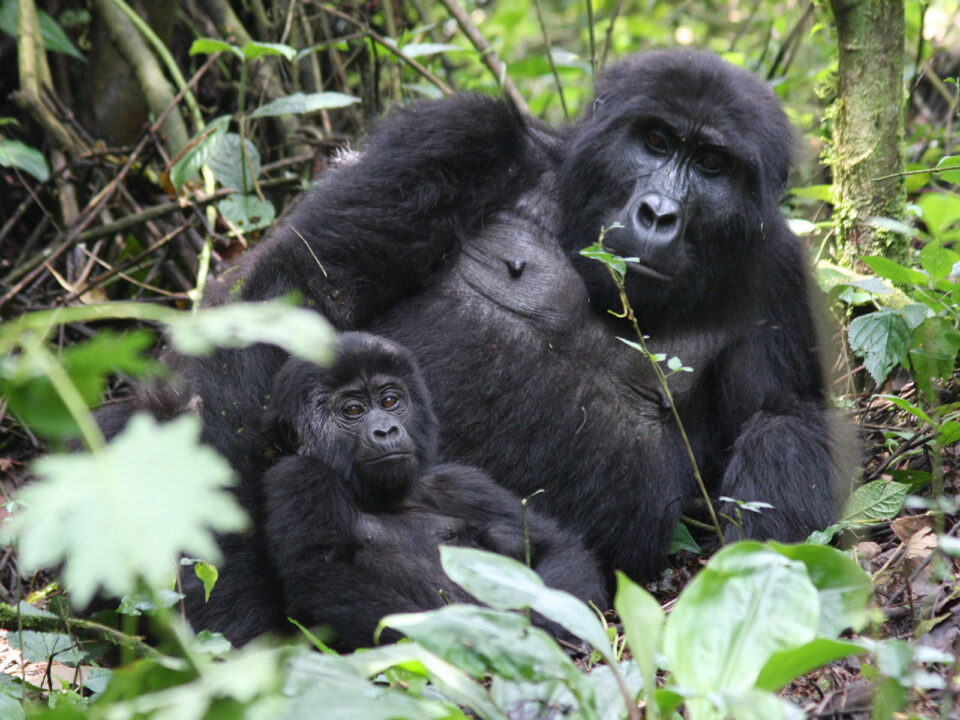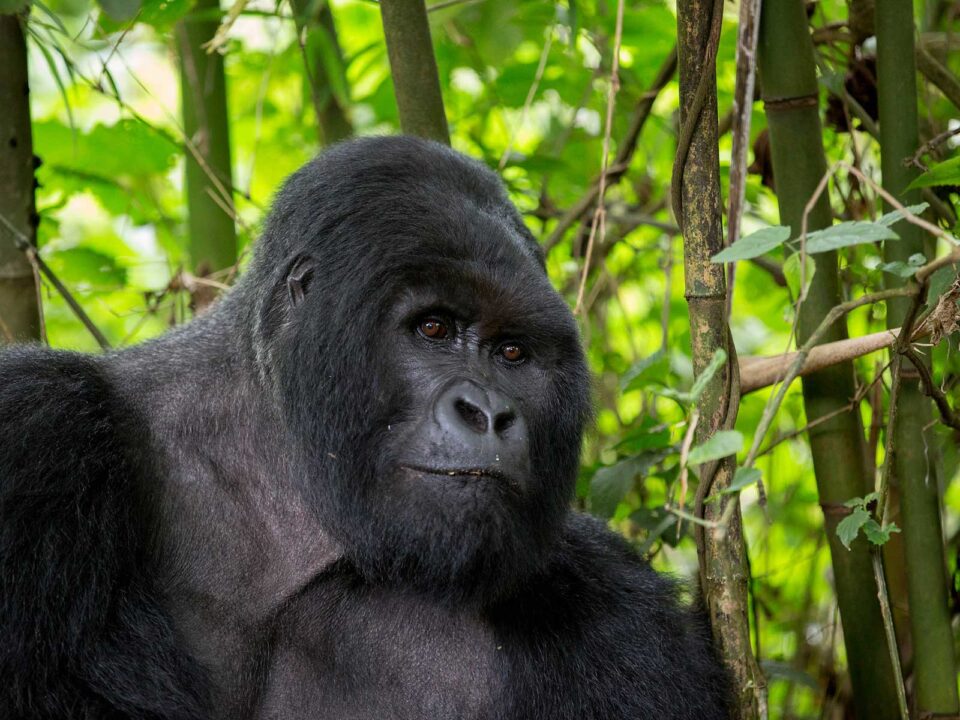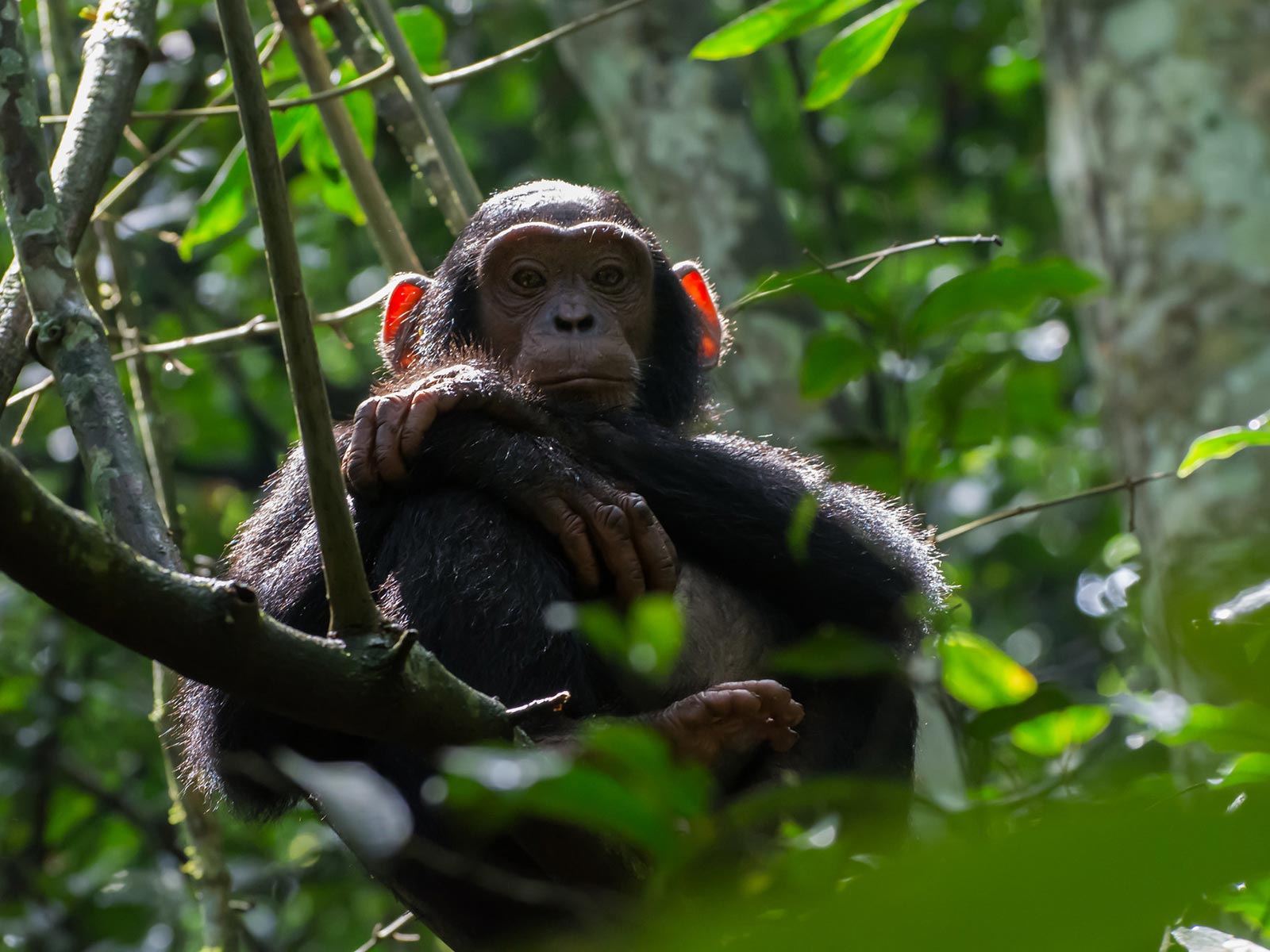
5 Luxury things to do in Kibale Forest National Park
July 26, 2023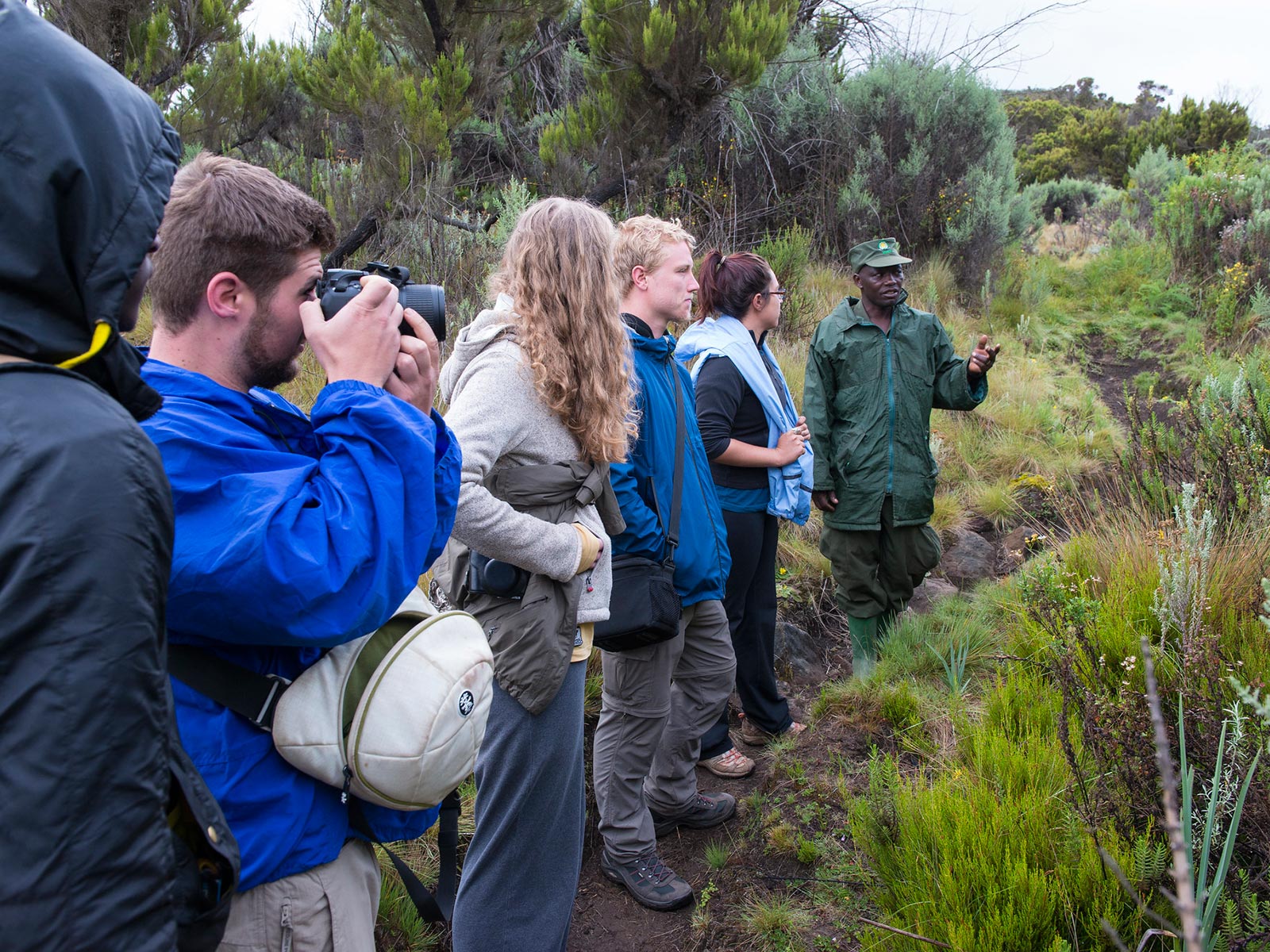
Group Safaris in Uganda
July 28, 2023Gorilla Families Flourishing in Virunga National Park, DR Congo
Nestled within the central African region, Virunga National Park stands as one of the three vital sanctuaries dedicated to the protection of endangered mountain gorillas, which roam freely amidst the breathtaking slopes of the Virunga Mountains. This extraordinary park, located on the side of the Democratic Republic of Congo, shares its habitat with Volcanoes National Park in Rwanda and Mgahinga National Park in Uganda. Within these lush and pristine mountains, about half of the world’s endangered mountain gorilla population finds sanctuary, living in close-knit family groups.
Mountain gorillas, known for their remarkable social structures, thrive in small patriarchal family units led by a dominant male silverback. While the family may have other silverbacks, all members must submit to the authority of the dominant one, or they may face a forceful dismissal. The dominant silverback assumes the role of protector, meticulously planning and leading foraging routes and family activities, and retains exclusive mating rights. Adults in the family place their trust in his leadership and protection abilities, while females often leave to avoid inbreeding.
Through collaborative efforts between researchers, primatologists, and the Congo government, a few mountain gorilla families living in Virunga National Park have been habituated for tourism. Thanks to this process, rangers can now escort visitors above the age of 15 into the lush Virunga forests to encounter a habituated gorilla group and spend an unforgettable hour in their presence.
The process of gorilla habituation is a laborious and costly endeavor, involving a gradual introduction of the troop to human presence. It takes around two years for a troop to be ready for tourism, during which the process occurs with minimal disruption to the mountain gorillas’ daily activities. Each gorilla in the troop is carefully identified by its unique nose print and bestowed with a name during the habituation process. The rangers who accompany tourists in the forest are well-acquainted with each gorilla by name and can easily distinguish their individual characters.
Habituation serves as a crucial means to monitor and comprehend the gorillas’ behavior while also preparing them for ecotourism, which significantly contributes to the conservation budget. Through habituation, the mountain gorilla population has experienced a healthy resurgence, moving out of the critically endangered zone, with their numbers now exceeding one thousand individuals. This achievement stands as a testament to the dedicated efforts of preserving these magnificent creatures and safeguarding the precious habitat of Virunga National Park.
Exploring Gorilla Families in Virunga National Park and How to Observe Them
In the magnificent Virunga National Park, a sanctuary for endangered mountain gorillas, lies an array of remarkable gorilla families waiting to be discovered. Let’s delve into the lives of some of these incredible groups and learn how you can witness their captivating existence up close.
Kabirizi Gorilla Family
Habituated in the Bukima sector in 1994, the Kabirizi Family has a fascinating history of leadership transitions. Initially led by its first patriarch who passed away due to old age, Ndungutse, his son, took over the reins until a tragic encounter with poachers claimed his life in 1997. Subsequently, the matriarch Nsekuye temporarily led the group before handing over interim leadership to Muyanga. Sadly, she passed away in April 2010.
During the years following 1998, the family saw an expansion in numbers, reaching 36 members. However, encounters with another silverback led to conflicts and separations, reducing the family to only 21 individuals. Currently, the Kabirizi Family consists of approximately 24 members and remains one of the cherished gorilla families to encounter in Virunga National Park.
Bageni Gorilla Family
Under the formidable leadership of Silverback Bageni, the Bageni Gorilla Family stands as a testament to resilience and determination. Bageni grew up in his father Kabirizi’s troop and attained the status of a silverback in 2010. Three years later, he bravely fought his father for dominance, successfully leading away 20 individuals to establish his own family. Notably, among those he took with him were females, including Kamoso, his mother Mapendo, a young adult Ntamuculira, and another silverback named Kanamahalagi.
Today, the Bageni Family boasts a robust count of 46 members, comprising three silverbacks, thirteen adult females, one Blackback, seven sub-adult females, one sub-adult male, and ten infants.
Mapuwa Gorilla Family
Led by the commanding silverback Mapuwa, the Mapuwa Gorilla Family has a captivating journey of independence and growth. Formerly a member of his father Rugendo’s troop, Mapuwa ventured out on his own in 1995, becoming a solitary male in the Virungas. Over three years, he engaged in numerous clashes with other gorilla families before gaining the trust of females and forming his own group. He took females from Lulengo, Kwitondo, and Rugabo families to solidify his troop.
The Mapuwa Gorilla Family flourished over the decade following 2020, swelling to approximately 22 members. However, in 2017, a younger silverback named Mvuyekure claimed leadership, resulting in Mapuwa briefly experiencing exile before eventually rejoining as a submissive male.
Currently, the Mapuwa Gorilla Family thrives around the Jomba area with 26 individuals, including three silverbacks, one Blackback, eight adult females, three sub-adults, and eleven young ones.
Rugendo Family
Nestled between Virunga National Park’s Bukima and Bikenge areas in the Mikeno sector, the Rugendo gorilla group is under the guidance of Silverback Bukima. With a history of significance in the park, Rugendo was among the pioneering gorilla families to be habituated in 1995. In the early years post-habituation, Silverback Rugendo temporarily departed the group, but tragically, rebels claimed his life in 2001. Nonetheless, Rugendo’s legacy lives on through his many distinguished offspring, including Mapuwa, Humba, Mukunda, Ruzirabwoba, Mburanumwe, Kongomani, Nyakamwe, Baseka, Lubutu, and Bahati.
After Rugendo’s passing, his son Senkwekwe continued the family’s leadership until poachers ruthlessly ended his life along with five other gorillas in 2007. Following this devastating loss, the group endured a period without a leader until 2008, when a solitary silverback named Bukima effortlessly assumed the role.
Currently, the Rugendo gorilla group comprises 13 individuals, among them 3 Silverbacks, 2 Sub-adults, 4 Adult females, 1 Juvenile, and 3 Infants.
Lulengo Gorilla Family
Led by silverback Lulengo, the Lulengo gorilla group roams between Virunga National Park’s Bikenga and Jomba areas. The process of habituation for this family commenced in 1985 under the dominant male Rugabo. However, tragedy struck in the form of poachers who attacked the group, claiming Rugabo’s life and that of two adult females. Nevertheless, rangers managed to rescue a juvenile and apprehended the poachers, bringing them to justice.
Following the devastating events, Lulengo, Rugabo’s son, stepped up to lead the twelve remaining members of the troop. Throughout his reign, Lulengo has encountered clashes with other gorilla families in Virunga National Park, including Mapuwa and Rugendo, leading to losses within the family.
Presently, the Lulengo gorilla family consists of 11 individuals, featuring one silverback, one Blackback, 2 Sub-adults, three adult females, 2 Juveniles, and 2 Infants.
Munyaga Gorilla Family
Under the command of Silverback Mawazo, the Munyaga gorilla family thrives in the Bukima area, comprising twelve members. Among them are three silverbacks, three adult females, one sub-adult, two juveniles, and three Infants. The Munyaga gorilla family had disappeared in 2007 due to the occupation of the area by rebels. However, they reemerged in 2008, with Mawazo taking the helm and maintaining leadership to this day.
Humba Gorilla Family
Roaming around Virunga National Park’s Gatovu and Bikenge areas, the Humba gorilla family is under the watchful guidance of Silverback Humba. Humba made a significant move by splitting from his father, Rugendo, along with six individuals to establish his family in 1998. Interestingly, his younger brother accompanied him in this endeavor.
The Humba family swiftly grew in numbers, reaching 16 members by 2014. However, familial bonds were tested, and the two brothers, Humba and Nyakamwe, engaged in a power struggle, leading to a split in the group. Nyakamwe left with a 10-member strong new family, leaving Humba with a sense of defeat.
Nonetheless, the Humba gorilla family has shown resilience and expansion under the leadership of silverback Humba. Today, it boasts 15 individuals, including two silverbacks, four adult females, four juveniles, and five Infants.
Nyakamwe Gorilla Family: A Strong and Diverse Group
The Nyakamwe gorilla family boasts a vibrant and diverse community, consisting of 15 members, each contributing to the dynamic dynamics of the group. Among its ranks are three impressive silverbacks, symbolizing strength and authority. Accompanying them are four adult females, nurturing and protective figures in the family. The group further includes two sub-adults, three juveniles, and three adorable infants, adding youthful energy and playfulness to the mix.
The Nyakamwe family originated from a split within the Humba gorilla group in 2014 when it branched out with ten members to establish its own home. Today, it thrives in the lush surroundings of the Bukima area within the Virunga National Park.
Baraka Gorilla Group: Embracing a Promising Future
The Baraka gorilla group stands on the verge of full habituation, eagerly awaiting the arrival of curious visitors. Nestled in the scenic Gikereri area of Virunga National Park, this family is led by the formidable Baraka silverback, an impressive figure radiating strength and wisdom.
With approximately 19 members, the Baraka gorilla group is still in the process of being thoroughly identified by dedicated researchers and primatologists. Each gorilla’s unique personality and characteristics will soon be revealed, adding to the captivating experience of encountering them in their natural habitat.
For those seeking an extraordinary wildlife adventure, the Baraka Gorilla Group is a promising choice, offering an intimate glimpse into the captivating world of these majestic creatures.
Wilungula Gorilla Family
The Wilungula gorilla family ranges around the Kikereri area and is one of the new habituated gorilla families in Virunga National Park and has about 42 individuals, including four silverbacks. Identification of all members is still ongoing.
Gorilla Trekking in Virunga: Affordable and Adventurous
Embarking on a thrilling gorilla trekking adventure doesn’t have to break the bank. In Virunga National Park, DR Congo, you can obtain a gorilla permit for just USD 450 per person, making it the most budget-friendly option compared to Uganda’s USD800 and Rwanda’s $1,500 permit costs.
To secure your permit, you have two options: either book directly with the Virunga Foundation in Virunga National Park, a process that some find bureaucratic and prefer to avoid, or choose a licensed local tour operator like Trek Africa Expeditions. If simplicity is what you seek, reach out to us at [email protected], and we promise to streamline the process for you.
Beyond the gorilla permit, the overall cost of your gorilla trekking safari in Virunga will include accommodation options ranging from $100 to $300 and necessary transfers.
Now, let’s talk about how to reach this magnificent destination. You can access Virunga National Park via Goma, a mere one-hour drive from the park entrance. Goma has regional flights that offer convenient connections to Kigali (Rwanda), Entebbe (Uganda), and Addis Ababa (Ethiopia) through Uganda Airlines, Ethiopian Airways, and Rwandair.
Alternatively, if you prefer a scenic drive, you can embark on a 4-6 hour journey from Kigali International Airport, crossing the Rwanda-DRC border at Gisenyi to reach Virunga National Park.
When it comes to choosing the best time to go, keep in mind that Virunga National Park remains open throughout the year. However, the optimal months for gorilla trekking are between June and September, as well as December to February, which fall during the dry season. Although the park is situated in a tropical region at high altitude, unexpected rain showers can occur at any time. To avoid the high chances of rain during the wet season, it’s advisable to plan your trek during the dry months unless you’re up for a more adventurous experience.
Virunga National Park in DR Congo awaits intrepid travelers willing to embrace its untamed rainforests and encounter unparalleled wildlife experiences. If you’re ready to embark on this awe-inspiring journey, don’t hesitate to reach out to us at [email protected], and we’ll help you plan your unforgettable DR Congo safari.

